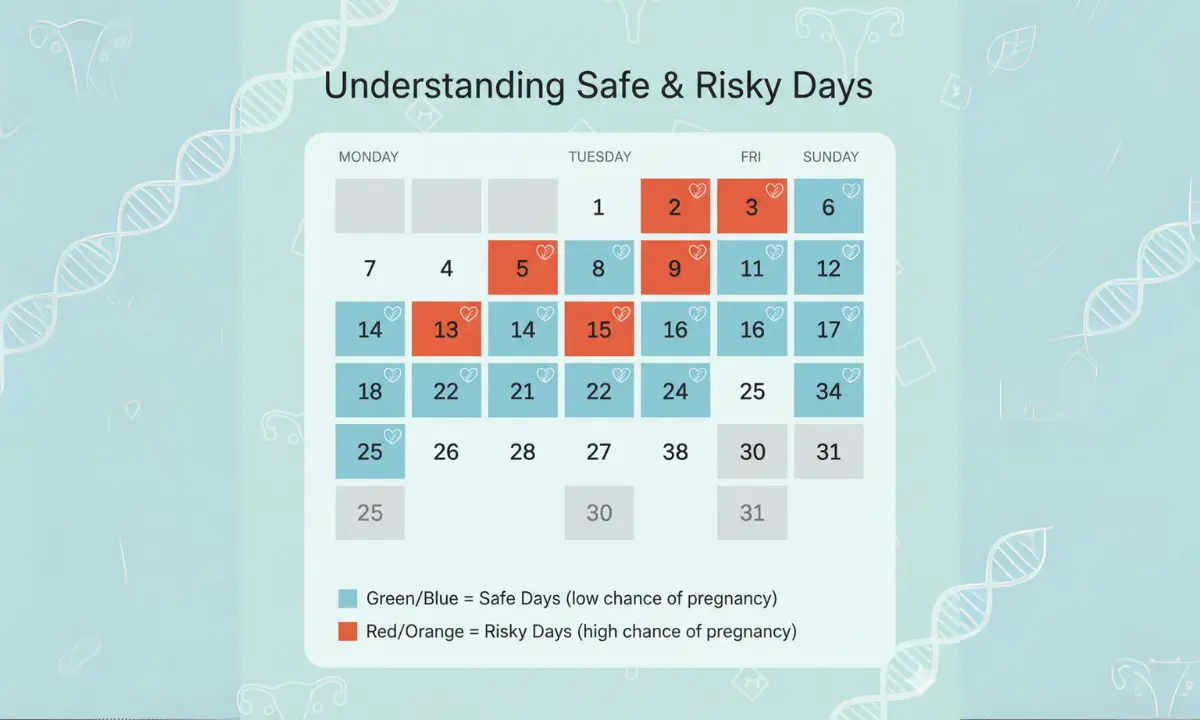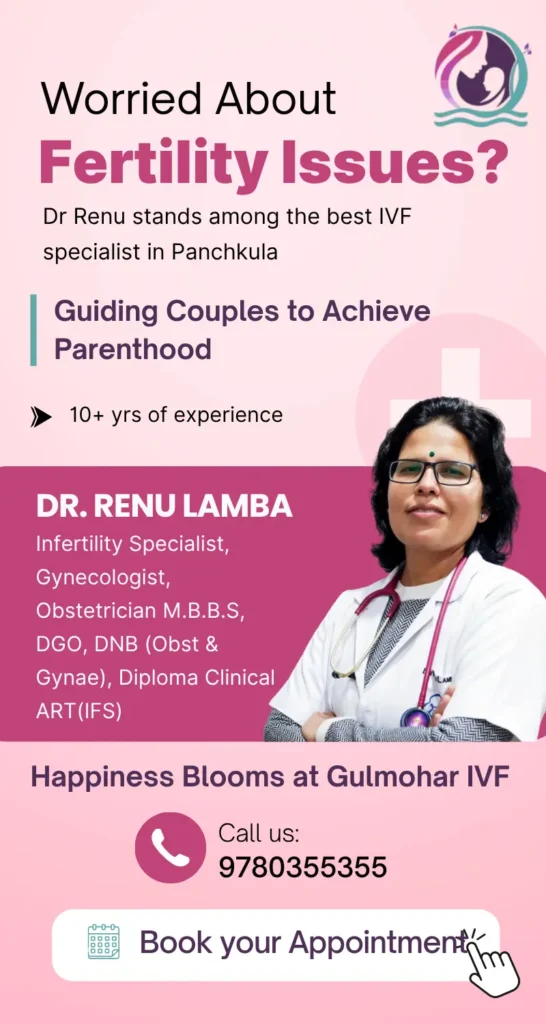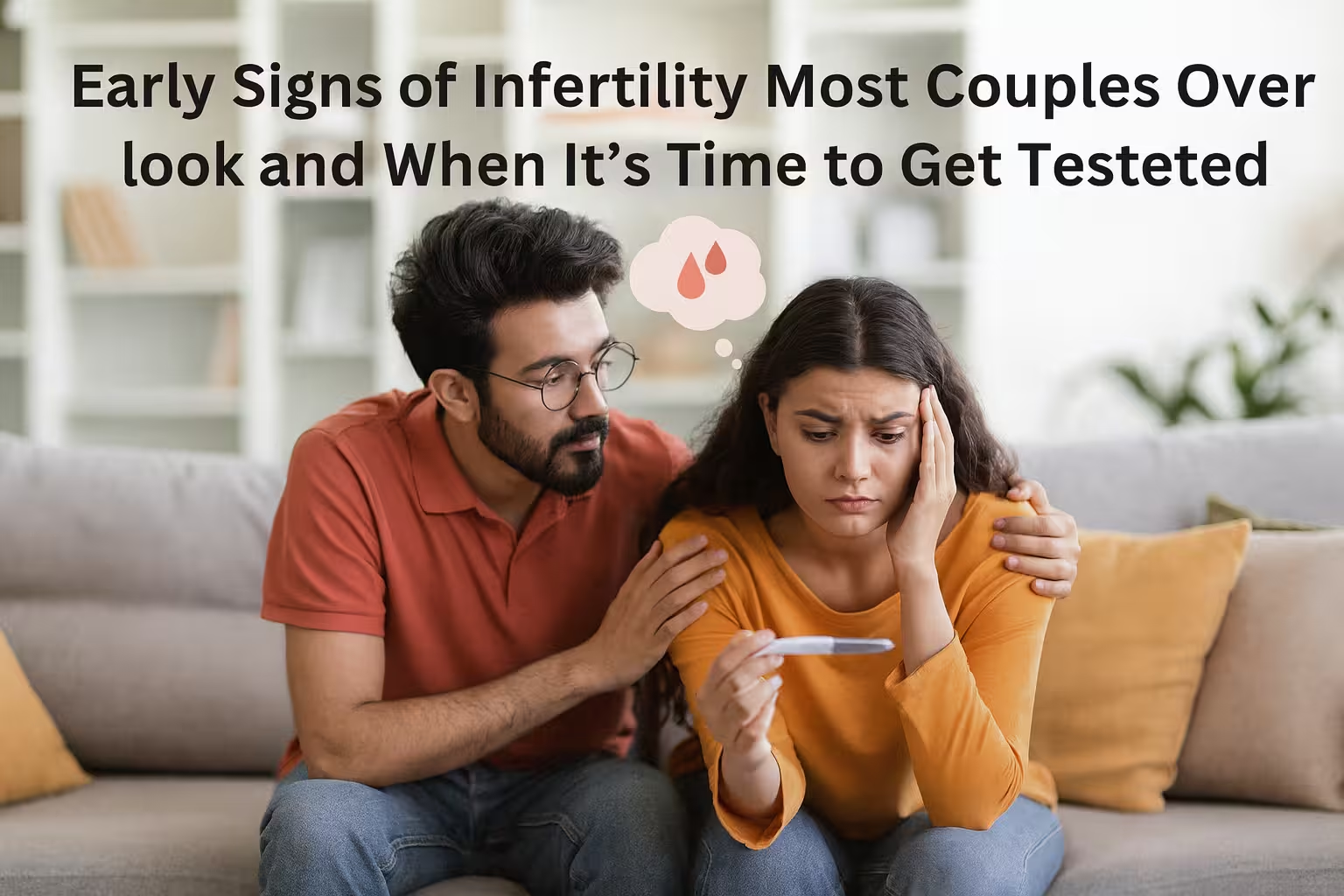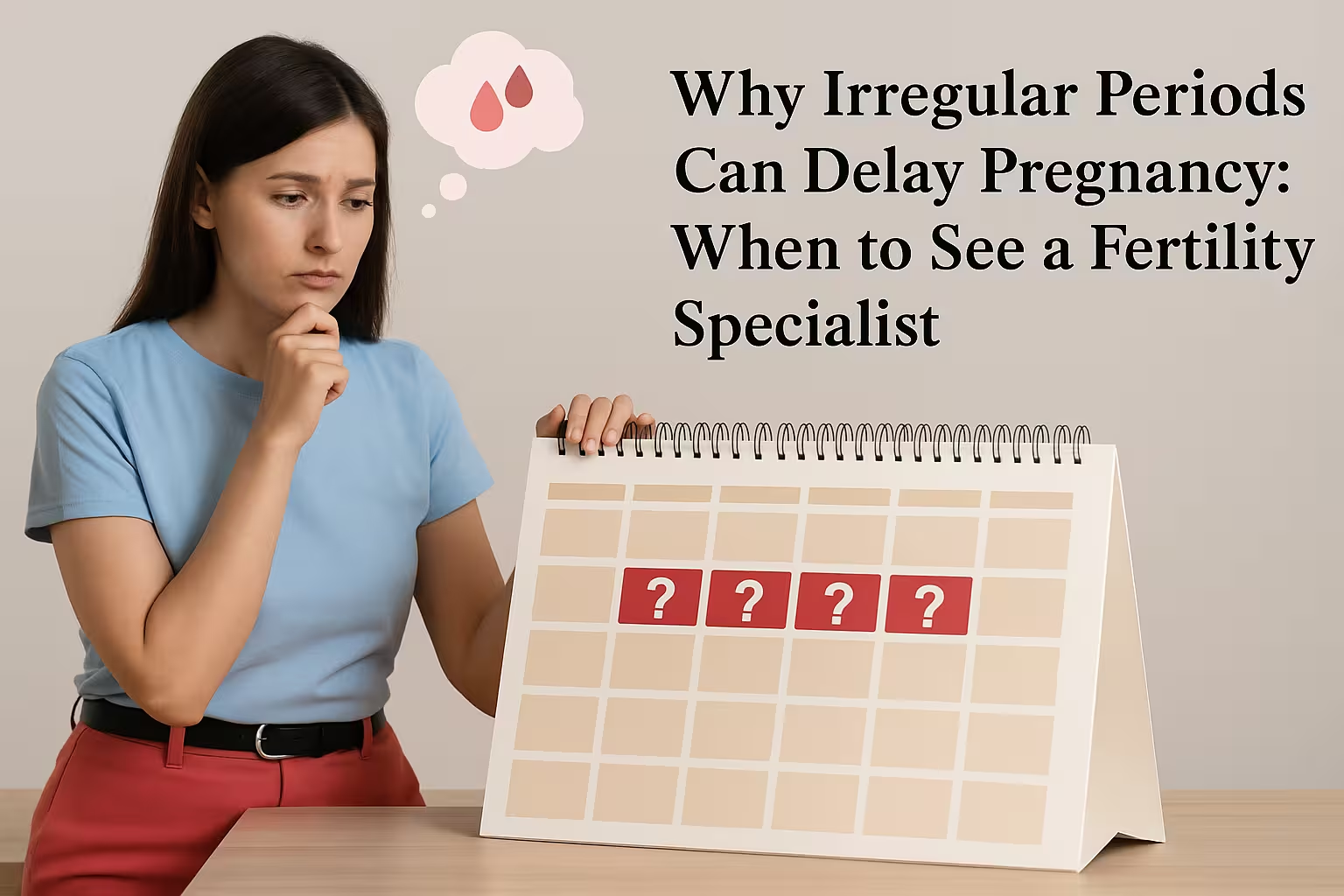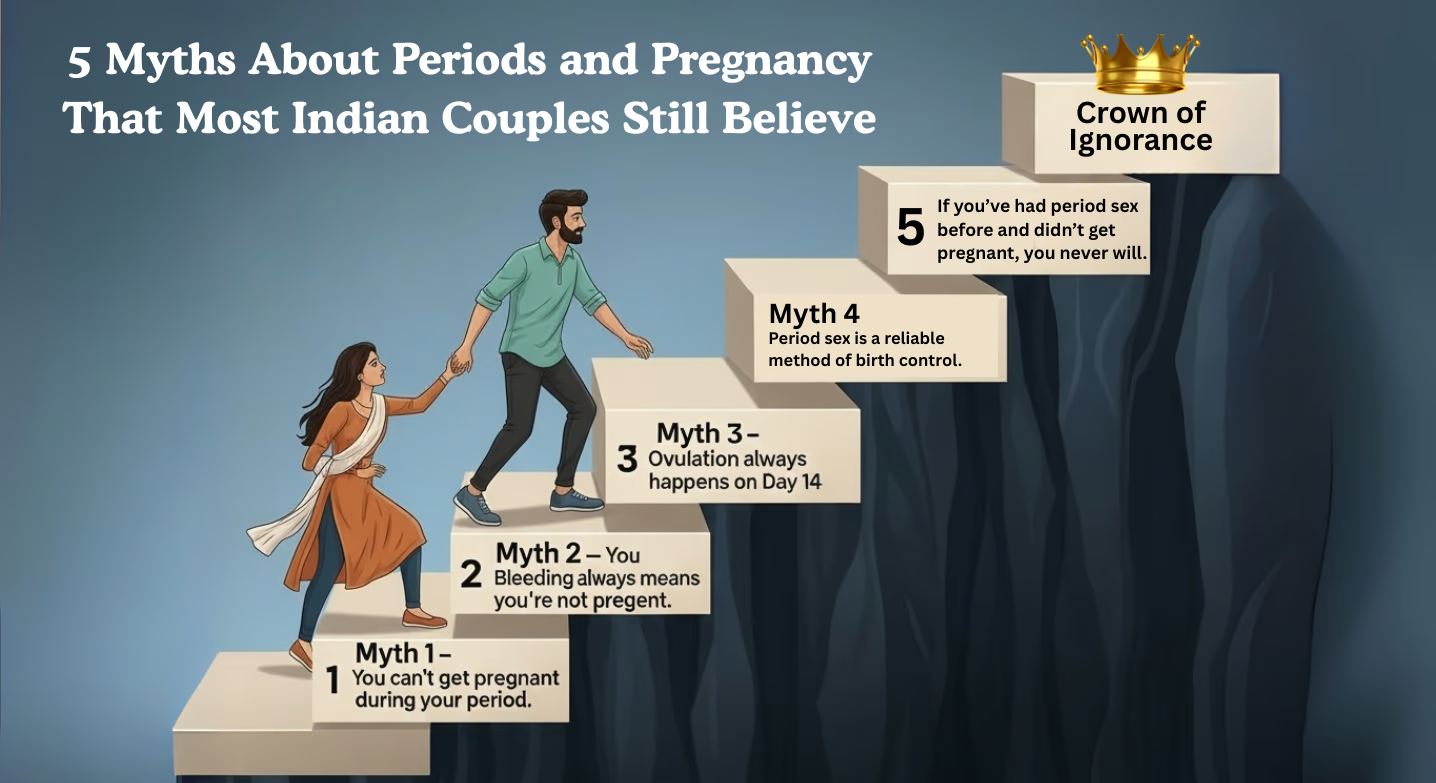The story most couples in Panchkula know
Riya and Kunal, a newly married couple living near Sector 12 in Panchkula, had heard the same advice that so many couples in their 20s and 30s grow up within the first week after a period is always “safe” and the middle of the month is always “risky.” For months they believed this without ever checking the medical facts. Riya kept a rough count on her fingers, and Kunal joked that they didn’t need any other method. But when a positive pregnancy test appeared one morning, both were shocked. “We only did it on a safe day!” they protested.
This is not just their story. It is the story of countless Indian couples who rely on half-knowledge passed down by elders, relatives, or even WhatsApp forwards. The truth is that safe days and risky days are not written in stone. They change with every woman’s cycle, lifestyle, and health. Understanding them is not about memorising numbers on a calendar, but about learning how the body works.
Safe days and risky days – Analogy
Think of the menstrual cycle like a drama with four acts.
Act 1 (Days 1–5): The curtain opens with bleeding. These days are generally thought to be safe because the body is shedding its lining and the egg has not yet been released. But here’s where most people go wrong, sperm are clever actors in this drama. Once inside the body, they don’t die immediately. They can survive for three to five days in the right conditions. So if ovulation happens early, sperm from a supposed “safe day” can still fertilise the egg.
Act 2 (Days 6–11): These are the “setting days.” Hormones are rising, the uterus is preparing, but ovulation hasn’t occurred yet. Couples often believe this is still safe territory. But it is here that most mistakes happen, because the body doesn’t run like a machine. In some women, ovulation may begin earlier than expected, shifting the risky days forward.
Act 3 (Days 12–16): The climax – ovulation. This is the fertile window, the true risky period. If sperm and egg meet during these days, the chance of conception is at its peak. Medical studies suggest that a couple having regular intercourse during this fertile window may have as high as a 30 percent chance of conceiving in that cycle. That is why doctors call it the “golden window” for couples trying for a baby.
Act 4 (Days 17–28): The curtain begins to fall. If no conception happens, the body prepares to reset. These days are often considered safe again, but in women with irregular cycles, ovulation may occur late, which still makes these days risky in some cases.
The key lesson from this story is that safe and risky days are not as clear-cut as people assume. They shift based on the woman’s body, her cycle length, and even external factors like stress and diet.
Why the “calendar method” fails so often
The biggest mistake couples make is depending only on the calendar method, also known as the rhythm method. Families often teach women to count seven days from their period as safe, with day 14 marked as risky. This oversimplifies biology.
Here is the truth. Menstrual cycles do not all last 28 days. In fact, according to NHS data, cycles can be as short as 21 days or as long as 35. In India, lifestyle changes like late working hours, stress, frequent travel, and conditions like PCOS make cycles even more unpredictable. A woman who has a 24-day cycle will ovulate much earlier than someone with a 32-day cycle.
This means that couples relying blindly on day-counting can either miss their best chance to conceive or accidentally land in their most fertile window when trying to avoid pregnancy. It’s like catching a bus without checking the timetable. Some days it comes early, some days late. If you stand at the stop based only on assumption, you will either miss it or be caught off guard.
The emotional side couples rarely talk about
When couples miscalculate safe and risky days, the consequences are not just physical but emotional. Many young women in Panchkula have told us about the constant anxiety they feel every month, wondering if a “safe day” was really safe. Men, too, often feel helpless, relying on outdated advice from friends and relatives.
If pregnancy happens unexpectedly, guilt and blame often follow. Women may feel responsible for not knowing their body well enough, while men may feel they failed in planning. On the other hand, couples trying hard for a baby sometimes experience heartbreak when conception does not happen, only because they misunderstood their fertile window.
This emotional stress is unnecessary, and it comes from one root cause: lack of proper education about cycles and fertility. In a culture where conversations about sex and conception are still hushed, myths thrive and couples pay the price.
Practical tips every couple should know
- Track your cycles carefully. Use mobile apps, keep a notebook, or even mark dates on a calendar. Over a few months, you will notice your personal rhythm, which is more reliable than general advice.
- Watch for ovulation signs. Some women notice changes in cervical mucus, slight abdominal pain, or a rise in body temperature. These small clues can help identify risky days more accurately.
- Use protection if avoiding pregnancy. Even if you think you are in a safe window, use a condom or another contraceptive if you are not ready for a baby. This adds security and also protects against sexually transmitted infections.
- For couples trying to conceive. Don’t focus only on Day 14. Aim for intercourse every two to three days during the middle of your cycle. This ensures that sperm are present in the body whenever ovulation occurs. You can read our detailed Ovulation Tracking Guide for step-by-step help.
- Seek medical guidance when needed. If your cycles are irregular, if you face conditions like PCOS or thyroid problems, or if conception hasn’t happened after a year of trying, consult a fertility specialist. Sometimes medical intervention is necessary, and early support makes a big difference.
Quick Guide: Safe Days vs Risky Days
| Cycle Phase (28-day example) | Days | Pregnancy Risk | Explanation |
|---|---|---|---|
| Menstrual Phase | 1–5 | Low (but not zero) | Egg not released yet, but sperm can survive up to 5 days. If ovulation is early, risk increases. |
| Early Follicular Phase | 6–11 | Moderate | Uterus prepares, hormones rise, ovulation can shift earlier than expected. |
| Ovulation / Fertile Window | 12–16 | High | Egg is released. This is the most fertile time, with up to 30% chance of conception in a single cycle. |
| Luteal Phase | 17–28 | Lower (but variable) | If ovulation is delayed or cycles are irregular, pregnancy can still happen. |
Key statistics that reveal the truth
- Around 85 percent of couples conceive naturally within one year if they have regular intercourse during fertile windows.
- Sperm can survive inside the female reproductive system for up to five days, which means intercourse before ovulation can still lead to pregnancy.
- Menstrual cycles range between 21 and 35 days in most women, which shifts safe and risky days by nearly a week.
These numbers show why relying only on counting days is unreliable.
Final word for Panchkula couples
Safe days and risky days are not fixed dates on a calendar. They are moving targets shaped by your cycle, lifestyle, and health. Believing otherwise is what leads so many Panchkula couples into either unexpected pregnancies or missed chances at conception.
Whether you are planning to avoid pregnancy or hoping to welcome a child, the key is to understand your fertile window, not to depend on myths.
As Dr. Renu Lamba of Gulmohar IVF tells her patients: “Your body has its own rhythm, and it changes month to month. The more you listen to it, the fewer surprises life will bring.”
Related Read
- IVF in Panchkula: Complete Guide
- After 35: What Panchkula Couples Must Know Before IVF
- Common Causes of Infertility
- The Diet That Boosts IVF Success
Disclaimer:
This article is for educational purposes only and should not be taken as medical advice. Every woman’s cycle and fertility journey is unique. Please consult a qualified gynecologist or fertility specialist, such as Dr. Renu Lamba at Gulmohar IVF, Panchkula, for personalised diagnosis and treatment options. All personal names or examples used in this article are purely illustrative and not real individuals.


